Boating technology has been evolving for as long as people have been taking to the water—the materials, hull designs, propulsion methods, and interior layouts products of the boats’ intended utilities. For the modern fly angler, these centuries of technological evolution have culminated in the form of the dory-style drift boat, crafted from wood, then metals, then the current, industry-favored fiberglass. But innovation and evolution are ongoing. Boulder Boat Works, a drift boat manufacturing company based in Carbondale, Colorado, has been on the vanguard of drift boat technology since its beginning with its innovative hull material technology, and the company’s new ownership is continuing to honor that legacy.
Before acquiring the company in November of 2017, Shaun Hargrave, now owner of Boulder Boat Works, was aware of the company via childhood friend and Colorado guide, Dan McMahon, who operated out of a Boulder boat.
“I would come out and fish with Dan and row his Boulder for years after college,” said Hargrave, who was operating a materials manufacturing company at the time that the drift boat company went up for sale. “Really since I was a kid I’ve wanted to sell something in the fishing industry—a tangible product,” said Hargrave. So, Hargrave liquidated his manufacturing company, and moved to the Roaring Fork Valley. “It was a no-brainer—a dream job, and an opportunity.”
Already, Hargrave and his team of skilled boat makers are leaving their mark on the brand with the release of a skiff-style boat at the 2019 International Fly Tackle Dealer (IFTD) show in Denver, this week.
The Polymer
A Boulder boat is an elegant marriage of fine, white ash or African mahogany woodworking in the casting braces, rope-woven seating, ribs, and gunwale framing, and a modern, minimalist, beige hull—at first glance.
More Like This
But what really makes Boulder Boat Works stand out from the pack of modern drift boat manufacturers is their innovative hull technology. What looks like a minimalist hull is really a high-density polyethylene polymer with intrinsic properties that lend the boats weight, durability, and fishability advantages over boats constructed with other materials.
Since the boats are built with a single sheet of polymer material, without any sandwiching process, the boats are very lightweight, with hull weights ranging from 160 to 200 pounds, compared to the industry standard 200 to 300 pounds.
The polymer is also bombproof, and that durability is its primary advantage. “People are blown away when they hit a rock and then go looking for that gouge or scrape at the end of the day and it’s not even there,” said Hargrave. And I can attest. I’ve had the pleasure of rowing a Boulder on a few occasions in shallow river fishing situations, and I’ve been instructed to try to hit rocks to experience the benefits of the polymer. The flexibility and durability of the polymer allows you to engage a rock smoothly and quietly, with no jarring bang!, and then slide off of the obstacle with minimal effort. And when creeping over shallow, rocky flats, there is no loud cracking when the hull comes in contact with rocks.
If there’s a downside to the Boulder boats, it’s a conditional one, and it’s price. Tricked out with all of the top-end options, Boulders come at a bit of a premium, but most come at a price on par with top-of-the-line offerings from other manufacturers. However, the boats’ durability significantly impacts total cost of ownership, since you’ll never have to repair or re-glass the hull. “This year we had three of the first ten boats ever produced come through the shop for a little bit of maintenance, and they’re fully functional, commercial boats that are twenty years old,” said Hargrave. “You make an investment in the boat, and you’ll spend less on a Boulder than you will on a glass boat.”

As someone who spends most of his time guiding for smallmouth bass out of a raft on shallow, rocky rivers studded with significant whitewater, I’ve always been skeptical of the place that drift boats have on my home waters, but after rowing a Boulder, I’d have no reservations working out of one. The lightweight nature of the boats makes them fast, responsive, high-floating, and easy to handle, and the durability and stealth lent by the polymer material allows you to fish shallower water and get closer to rocks without worrying about degrading your boat or spooking fish. It is the step forward from fiberglass in the evolution of drift boat technology.
The Boats
The company’s flagship model featuring the polyethylene polymer material, the Pro Guide, which was introduced in 1999, is a McKenzie dory-style boat that comes in a high side or low profile rocker profile. In 2008, the company introduced the Guide boat—a more cost-effective option featuring NRS hardware for interior structure instead of the woodwork. However, when Hargrave acquired the company in 2017, there hadn’t been much recent innovation.
The potential applications of the polymer material is what motivates Hargrave and his team to push the envelope even further. “We’re excited to take this dynamic material and reshape it into a product that we know consumers are interested in,” said Hargrave. “We’re making the skiff, and we’re not going to wait another ten years for something else. We want to go out and talk to consumers and figure out what it is that they want. And because of the flexibility and creativity we can allow in our manufacturing process—since we’re not laying glass and metal—there’s a lot that we can do. So, if someone wants a Jon boat down the road and there’s demand for it, we’re going to do it. The skiff is just step one, and we’re not just going to meet the demand, we’re going to go above beyond.”

And a skiff-style boat is a great first step. While the McKenzie dory rocker profile of the Pro Guide and Guide boats shine in high-gradient, technical water situations, a skiff-style boat, with squared bow and stern, low sides, and a flatter rocker profile, is the tool of choice for anglers fishing bigger, flatter, shallower, and windier waters. “Building up the skiff gives us two great, viable options for every river market in the entire U. S., giving us the versatility to talk to every individual consumer, and figure out how they fish, who they fish with, and where they fish, and then we can land on what the right boat is for them,” said Hargrave.
Hargrave is quick to mention that there’s not a lot of wood in the new skiff. “I think a lot of people thought our brand was synonymous with beautiful wood, and it was tough for us to get away from it, but we want our brand to be known for high-end, very functional and thought out boats,” said Hargrave. And by his account, the team, who has been field testing the boat prior to release, hit the mark with the new boat offering. “The skiff seems faster than even our other profiles. It stops on a dime, and rides high in the water column because of how much water it displaces. It opens up the front of the boat, since the hull doesn’t come to such a pronounced point at the front. So there’s a mind-blowing amount of room in all three positions, which gives it so much more fishability.”
The Boulder Boat Works team is introducing the skiff to their lineup, this week, but as Hargrave said, it’s just the first step. Armed with an incredibly dynamic and valuable material, an entrepreneurial spirit, and a passion for helping anglers and guides fish more effectively and comfortably, the team will continue to march into the future of building fine, innovative, and utilitarian boats.




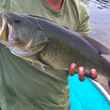






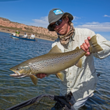




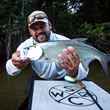




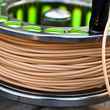
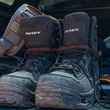




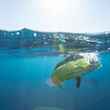





Comments